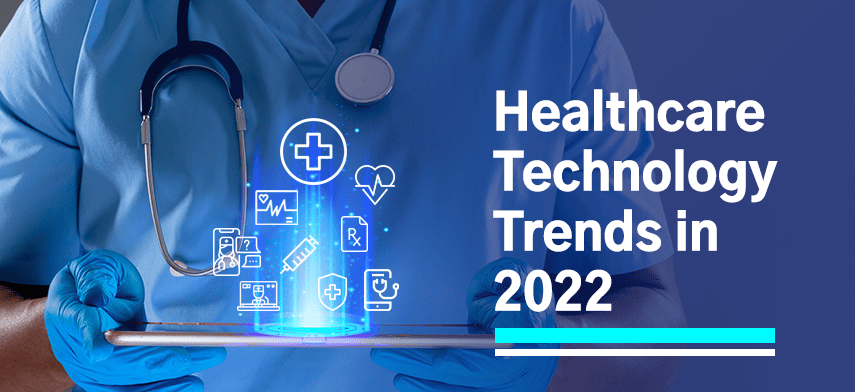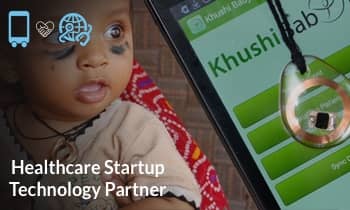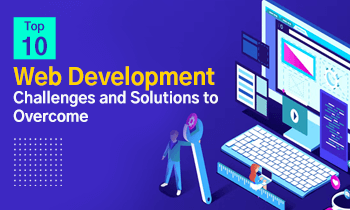The technology in healthcare has improved and evolved turning heads in the healthcare sector. The expansion of design and implementation in medical technology has been fast-paced and creating new pathways for healthcare technology trends to ensure better care delivery to patients. As the pandemic thrust the world into home quarantines and lockdown, healthcare industries became uncertain regarding the accessibility of healthcare and how the frontline workers would adhere to the new normal.

With the progressiveness of technology in healthcare with their history in indefinite innovations, the adoption of new technologies was necessary. The COVID-19 pandemic exposed certain criteria that required digital transformation in the healthcare industry. The introduction of Medtech and health tech organizations offered better reactivity in the face of adversities. Hence, paved an enhanced groundwork for the growth of digital infrastructure in providing better patient care services. The technological acceleration in health and health systems has wider implications.
Let’s take a look at the digital growth that will shape the future of the healthcare sector.
Predictions in Healthcare Technology Trends for 2022
Technology in healthcare has been crucial for keeping the resilience in the healthcare industry in the face of the pandemic. The vast adoption of virtual care delivery services and the quick creation of vaccines and their distribution has proved that we can adjust to the new normal community that has been growing. So what does the new year have coming for the healthcare technology trends?
As we anticipate the new year while being in the pandemic, healthcare technology trends are pushing healthcare professionals and providers towards delivering better access to care and enhancing the quality of care for every patient.
1 Creating trust in digital information overload
COVID-19 brought with it the information epidemic, termed by WHO as “infodemic”. This was created due to the influx of false information that was being scattered across various social, physical, and digital environments in the healthcare industry. 2022 brings providers to focus on enhancing access to trusted information and evidence-based quality rich health content for patients and professionals. Offering content that emphasizes patients’ experiences, enables clinicians to provide accessible and accurate health information. Hence, this is a key element in this information-saturated environment to create trust with patients in the age of digital information overload. This crucial component is still missing in the digital health space, as it has mostly prioritized workflow improvements and technological innovations.
2 Telehealth as a crucial unit in healthcare infrastructure
As healthcare technology trends advance into the new year, social distancing and self-isolation have upended care delivery services. This event caused various healthcare organizations, facilities, and clinics to adopt virtual care models and telehealth services. For the past few years, healthcare trends have undergone rapid evolution. Hence, it has been observed that telemedicine and telehealth services have proven to be beneficial when offering patient care services. Telehealth has become a resilient care delivery model and has established itself as a prominent fixture in the healthcare ecosystem. Providers are expected to strengthen formal training, enhance research, and promote the best practices telehealth has to offer to care delivery teams and patients. Specialties including mental health services and primary care delivery will predominantly shift their base to the virtual care model. This transition will have an immense impact on the history of medical sciences development.
3 Big data technology in healthcare
Big data collects massive amounts of health data information by adopting new technology in the healthcare industry. It gathers all patients’ medical information and records, utilizing the same to manage hospital and healthcare system performance. Big data as a part of healthcare technology trends are transforming the industry at an increased pace. One of the largest medical systems will be using devices to monitor patients and assist medical professionals and providers with feature-rich quality care services. The big data market globally is expected to cross USD 34.27 billion in 2022 with a CAGR of 22.07%. Big data technology in healthcare which has been considered an emerging healthcare technology will continue to be motivated to provide better care delivery via EHRs, workforce management solutions, and practice management tools.
4 Growth of IoMT
Internet of Medical Things or IoMT has been introduced as a connected infrastructure in the healthcare ecosystem. Its main aim is to provide effective care delivery in rural and underserved communities and to patients who are seniors and chronically ill, unable to attend their appointments with their providers. Data integration and innovation in the healthcare environment enable patients in accessing better quality treatment from the comfort of their homes. Health data can now be monitored by attending physicians with the help of personal health monitoring equipment. IoMT can be better categorized under the broad term where every technology of the entire industry improves patient health outcomes. Therefore, the Internet of Medical Things will continue playing a better role in enhancing patient care services.
5 Digital Therapeutics
Digital Therapeutics or DTx is notable due to its delivery of care via software. Digital health and wellness applications can be determined under digital therapeutics that are already accessible to the patient populations. DTx diverges from the larger healthcare environment and still requires proper regulatory approval that can be replaced or used alongside necessary treatment. Typically, therapies are conducted through digital spaces that are administered with mobile apps and smart devices. These can be clinician-facing, patient-facing, or a combined version of both. Virtual reality, a subsequent form under DTx is set to make a way in the upcoming decade. This is already in use for planning complicated surgeries, treating developmental disorders, or for medical training through virtual environments.
6 A hybrid approach to care with merging technology in healthcare
Telehealth services were considered a novelty before the pandemic and only a small percentage of healthcare facilities offered this service. As we transitioned to our current conditions, the healthcare industry has since observed an immense boom in virtual care services over in-person visits. It has also been noted that patients are expecting their care providers to offer a telehealth appointment when going forth with their scheduled visits. Hence, providers will find it to be beneficial by offering telehealth services in their practice. This hybrid approach can be considered in providing extended long-term care delivery services. The hybrid approach of combining in-person and virtual care visits adds to the revenue stream and will keep improving patient experience in the coming years.
7 Prioritizing protection of patient data with risk management strategies
Cyberattacks and other ransomware towards healthcare organizations were challenging in 2021. With added risk-related concerns with IoMT, cloud computing, interconnected data systems, and more kept IT leaders occupied in finding the right strategy to manage such risks. IT members and staff are prioritizing risk-management strategies to curb the sudden cyberattacks to protect patient data across the healthcare ecosystem. Implementing the right healthcare data protection with HIPAA compliance applications can reduce cyber threats and leakage of patient data and information. In 2022, healthcare leaders are looking to strengthen their IT security and compliance further, by enabling better data management strategizing with emerging technology in healthcare.
8 Driving improvement in population health management
Data analytics in healthcare built a point of focus for research amongst providers and researchers. Additionally, they faced challenges with the decision-making approach in real-time due to the rapidly changing circumstances during the pandemic. The requirement to improve, monitor, and respond to population health structures for improving patient health outcomes became a standpoint for public health agencies to consider. Integrating data visualization, implementing enhanced data sharing platforms, and dashboards for viewing population health will be a remarkable success in the new year.
9 Virtual simulation transforming education for nursing professionals
Online learning and virtual simulation have been predicted to become commonplace when administering nursing education strategies. Healthcare technology has been known to eliminate the traditional roadblocks of staffing challenges as it offers more flexible services and solutions for both professionals and students. Virtual simulation benefits the retention of knowledge and improves clinical reasoning skills. Hence, improving educational outcomes for nursing professionals and students.
Looking Ahead Towards an Equitable 2022
The healthcare technology trends that have been predicted for the year 2022 portray a space where healthcare professionals and patients benefit from actionable and smart data. It will also enable them to have flexible work schedules, different approaches towards studies, researches, and collaborations, and offer equitable access to care delivery services. The automation in healthcare technology will be enhancing better care delivery outcomes for health and health systems. The improvement in the delivery of patient care with technology in healthcare offers consistent care levels at large scales. Digitization in healthcare has a positive impact and the pandemic acted as a catalyst in creating a proper review, implementation, and administration of emerging healthcare technology.

Final thoughts
Healthcare technology trends will keep improving care delivery services by integrating new technologies. Having healthcare application services for both mobile and web can enhance businesses to higher levels. With top-notch guidance from experts in healthcare app development can enable your business to serve your patients better, and enhance business revenue generation. With Mobisoft, integrating the future healthcare technology trends can improve organizational workflow and provide better patient health and well-being outcomes. Therefore, we can conclude that digital technology companies like Mobisoft Infotech will keep playing a crucial role in improving healthcare infrastructure by enhancing the care delivery ecosystem at a bigger scale.

Author's Bio

Shailendra Sinhasane (Shail) is the co-founder and CEO of Mobisoft Infotech. He has been focused on cloud solutions, mobile strategy, cross-platform development, IoT innovations and advising healthcare startups in building scalable products.


